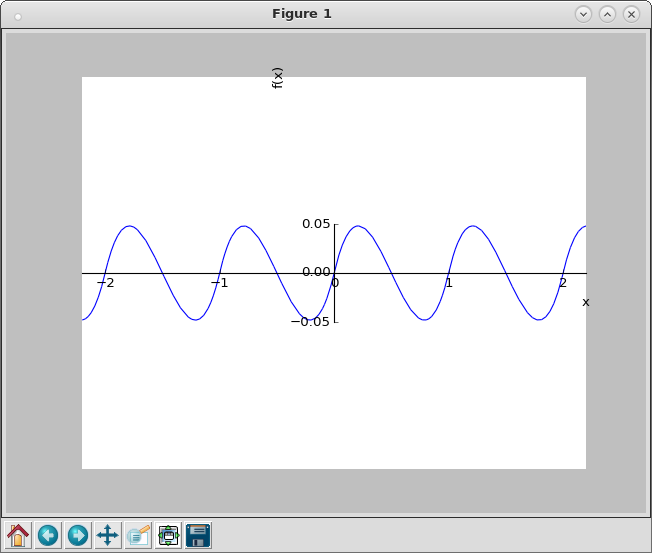白居易‧琵琶行
潯陽江頭夜送客,楓葉荻花秋瑟瑟。
主人下馬客在船,舉酒欲飲無管絃。
醉不成歡慘將別,別時茫茫江浸月。
忽聞水上琵琶聲,主人忘歸客不發。
尋聲暗問彈者誰,琵琶聲停欲語遲。
移船相近邀相見,添酒回燈重開宴。
千呼萬喚始出來,猶抱琵琶半遮面。
轉軸撥絃三兩聲,未成曲調先有情。
絃絃掩抑聲聲思,似訴平生不得志。
低眉信手續續彈,說盡心中無限事。
輕攏慢撚抹復挑,初為霓裳後六么。
大絃嘈嘈如急雨,小絃切切如私語。
嘈嘈切切錯雜彈,大珠小珠落玉盤。
間關鶯語花底滑,幽咽泉流冰下難。
水泉冷澀絃凝絕,凝絕不通聲暫歇。
別有幽愁暗恨生,此時無聲勝有聲。
銀瓶乍破水漿迸,鐵騎突出刀槍鳴。
曲終收撥當心畫,四絃一聲如裂帛。
東船西舫悄無言,唯見江心秋月白。
沉吟放撥插絃中,整頓衣裳起斂容。
自言本是京城女,家在蝦蟆陵下住。
十三學得琵琶成,名屬教坊第一部。
曲罷常教善才服,妝成每被秋娘妒。
五陵年少爭纏頭,一曲紅綃不知數。
鈿頭銀篦擊節碎,血色羅裙翻酒污。
今年歡笑復明年,秋月春風等閑度。
弟走從軍阿姨死,暮去朝來顏色故。
門前冷落車馬稀,老大嫁作商人婦。
商人重利輕別離,前月浮梁買茶去。
去來江口守空船,繞船月明江水寒。
夜深忽夢少年事,夢啼妝淚紅闌干。
我聞琵琶已歎息,又聞此語重唧唧。
同是天涯淪落人,相逢何必曾相識。
我從去年辭帝京,謫居臥病潯陽城。
潯陽地僻無音樂,終歲不聞絲竹聲。
住近湓江地低溼,黃蘆苦竹繞宅生。
其間旦暮聞何物,杜鵑啼血猿哀鳴。
春江花朝秋月夜,往往取酒還獨傾。
豈無山歌與村笛,嘔啞嘲哳難為聽。
今夜聞君琵琶語,如聽仙樂耳暫明。
莫辭更坐彈一曲,為君翻作琵琶行。
感我此言良久立,卻坐促絃絃轉急。
淒淒不似向前聲,滿座重聞皆掩泣。
座中泣下誰最多?江州司馬青衫濕。
作者好奇什麼樣的因緣使得白努利遇上傅立葉?閱讀維基百科詞條
Periodic Bernoulli polynomials
A periodic Bernoulli polynomial Pn(x) is a Bernoulli polynomial evaluated at the fractional part of the argument x. These functions are used to provide the remainder term in the Euler–Maclaurin formula relating sums to integrals. The first polynomial is a sawtooth function.
Strictly these functions are not polynomials at all and more properly should be termed the periodic Bernoulli functions.
The following properties are of interest, valid for all :
- P k ( x ) is continuous for all
彷彿在說︰曾經相逢不相識!而今既已相識不願不相知也!!
然而將 ![]() 閉開區間作週期函數擴張,引入
閉開區間作週期函數擴張,引入 ![]() ,此已非多項式矣,故應稱之為白努利週期函數耶?況且其『連續性 』尚得依賴
,此已非多項式矣,故應稱之為白努利週期函數耶?況且其『連續性 』尚得依賴 ![]() 乎??且因歷史來歷原故,所謂『正負』『分數部分』有歧義也︰
乎??且因歷史來歷原故,所謂『正負』『分數部分』有歧義也︰
Fractional part
The fractional part of a non‐negative real number is the excess beyond that number’s integer part. If the latter is defined as the largest integer not greater than x, called floor of x or
, its fractional part can be written as:
-
.
For a positive number written in a conventional positional numeral system (such as binary or decimal), its fractional part hence equals the digits appearing after the radix point.
For negative numbers
However, in case of negative numbers, there are various conflicting ways to extend the fractional part function to them: It is either defined in the same way as for positive numbers, i.e. by (Graham, Knuth & Patashnik 1992),[1] or as the part of the number to the right of the radix point,
(Daintith 2004),[2] finally, by the odd function [3]
with as the smallest integer not less than x, also called the ceiling of x. By consequence, we may get, for example, three different values for the fractional part of just one x: let it be −1.3, its fractional part will be 0.7 according to the first definition, 0.3 according to the second definition, and −0.3 according to the third definition, whose result can also be obtained in a straightforward way by
-
.
Unique decomposition into integer and fractional parts
Under the first definition all real numbers can be written in the form , where
is the number to the left of the radix point, and the remaining fractional part
is a nonnegative real number less than one. If
is a positive rational number, then the fractional part of
can be expressed in the form
, where
and
are integers and
. For example, if x = 1.05, then the fractional part of x is 0.05 and can be expressed as 5 / 100 = 1 / 20.
此處取捨之道無干『傳統』或『創新』,唯以容易畫圖︰
pi@raspberrypi:~x - \lfloor x \rfloor
frac(x) = x - \lfloor x \rfloor
B_1 (frac(x))
B_2 (frac(x))
B_3 (frac(x))$】
作者過去熟悉之符號選擇罷了。



